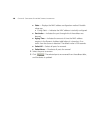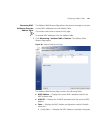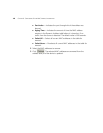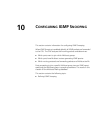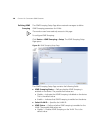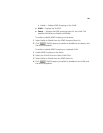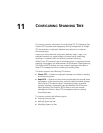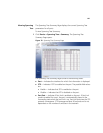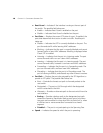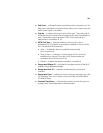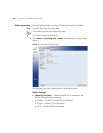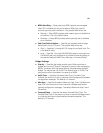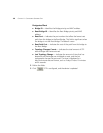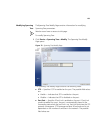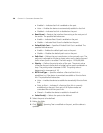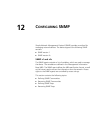148 CHAPTER 11: CONFIGURING SPANNING TREE
■ Root Guard — Indicates if the interface is acting as the root port of
the switch. The possible field values are:
■ Enable — Indicates Root Guard is enabled on the port
■ Disable — Indicates Root Guard is disabled on the port.
■ Port State — Displays the current STP state of a port. If enabled, the
port state determines what action is taken on traffic. Possible port
states are:
■ Disable — Indicates that STP is currently disabled on the port. The
port forwards traffic while learning MAC addresses.
■ Blocking — Indicates that the port is currently blocked and cannot
forward traffic or learn MAC addresses. Blocking is displayed when
Classic STP is enabled.
■ Listening — Indicates that the port is in Listening mode. The port
cannot forward traffic nor can it learn MAC addresses.
■ Learning — Indicates that the port is in Learning mode. The port
cannot forward traffic, however it can learn new MAC addresses.
■ Forwarding — Indicates that the port is in Forwarding mode. The
port can forward traffic and learn new MAC addresses.
■ Discarding — Indicates that the port is in Discarding mode. The
port is listening to BPDUs, and discards any other frames it receives.
■ Port Role — Displays the port role assigned by the STP algorithm to
provide to STP paths. The possible field values are:
■ Root — Provides the lowest cost path to forward packets to the
root switch.
■ Designated — The port or LAG through which the designated
switch is attached to the LAN.
■ Alternate — Provides an alternate path to the root switch from the
root interface.
■ Backup — Provides a backup path to the designated port path
toward the Spanning Tree leaves. Backup ports occur only when
two ports are connected in a loop by a Point-to-Point link, or when
a LAN has two or more connections connected to a shared
segment.
■ Disabled — The port is not participating in the Spanning Tree.
■ Speed — Indicates the speed at which the port is operating.



